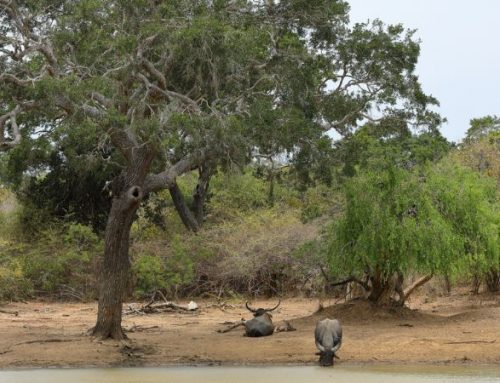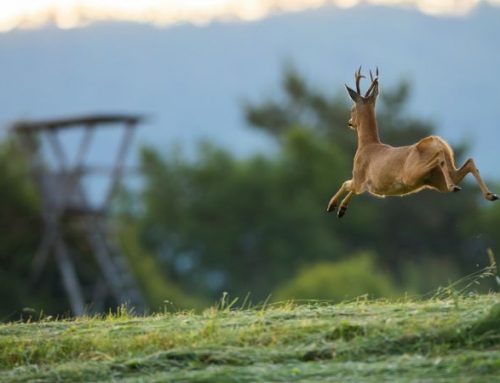They make no noise, they seek no spotlight. Yet they exist, and they always have.
In European forests, in southern fields, across African valleys and Italian woods: women hunters have walked alongside men, sharing the same passion, the same silence, the same thrill.
Only no one, for centuries, told their story.
Today, finally, those silent protagonists are reclaiming their rightful place.
And the sound of the rifle shot, when it leaves their hands, is never just a technical gesture: it is a declaration of freedom, strength, and belonging.
Between Myth and Reality: The First Women Hunters in History
The roots of female hunting go much further back than one might think.
In Paleolithic caves, recent findings in Peru and Mongolia have revealed skeletons of women buried alongside hunting weapons: a fact that overturns the long-standing idea that men were hunters and women were the keepers of the fire.

Even then, hunting was not about gender, but skill and courage.
In mythology, armed women are recurring figures: Artemis, the Greek goddess of the hunt and the moon, with her bow always drawn; Diana for the Romans, a symbol of independence and purity; the Norse Valkyries, proud and warrior-like, deciding the fates of fighters.
The woman hunter has always been an archetype of strength and intuition.
Not to dominate, but to know, to be part of the natural balance.
An ancient role, later overshadowed by centuries of patriarchal culture, but never completely disappeared.
In the Middle Ages and Renaissance: Hunting as Aristocratic Privilege
In the Middle Ages, hunting was reserved for the nobility. Court women — duchesses, queens, countesses — not only observed but actively participated.
Archives and paintings tell of Matilda of Canossa, a skilled falconer, and Eleanor of Aquitaine, riding with bow and arrows alongside her husband Henry II.
Hunting, for them, was an act of power and distinction, but also a way to assert independence.
During the Renaissance, hunting also became an aesthetic art.
Women appeared in portraits with falcons and greyhounds, symbols of grace and nobility.
But there were others: rural women who hunted out of necessity, to feed their families, often quietly, in the shadow of laws that forbade them.
They were the first “anonymous” women hunters, guardians of practical knowledge and respect for the land, passed down from mother to daughter.
19th and 20th Century: The Beginning of Change
Real change came with the 19th century and the arrival of breech-loading firearms.
Hunting became more accessible, less tied to physical strength and more to technique and sensitivity.
It was then that the first sport-hunting women emerged, especially in England and France.
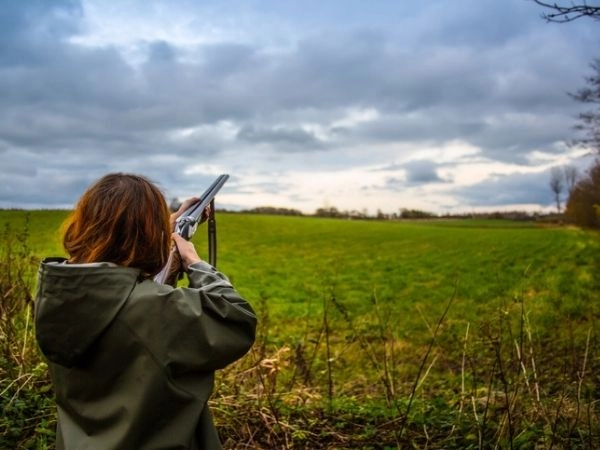
Among them stood Annie Oakley, the legendary American sharpshooter of the late century, capable of hitting a penny tossed into the air from a distance.
She forever changed the image: small, elegant, determined, she became the symbol of a woman handling a rifle with grace and precision — not to imitate men, but to show that hunting and shooting can also be art and mental discipline.
Meanwhile, in Italy, things were starting to move as well.
The first women hunters in the North, often wives or daughters of farmers, learned from their fathers how to handle double-barreled guns and work with dogs.
They had no visibility, but day by day, they were laying the cultural foundation for modern female hunting.
Post-War Silence: Hunting, Reconstruction, and a New Female Role
After World War II, hunting returned to being a male ritual.
Italy was rebuilding, and the image of the hunter — virile, strong, paternal — embodied an ideal of rebirth.
Women, once again, remained in the background.
Yet behind every hunting outing there was often a woman: training the dogs, preparing the game, caring for the hunted animals with respect.
An invisible, but fundamental role.
Then came the ’70s and ’80s, bringing another revolution.
Women gained rights, autonomy, economic freedom.
Hunting began to change as well.
The first female hunting licenses in Italy brought new perspectives: more attentive to nature, less competitive, more sensitive to the value of the experience.
The Present: The New Women Hunters
Today, female hunters are no longer an exception.
In Europe and Italy, the number of women with firearm licenses grows year by year, often educated, passionate, and attentive to ethics and sustainability.
New women hunters do not seek revenge.
They do not want to “be like men”: they want to experience hunting in their own way.
With respect, elegance, and an instinctive sensitivity that seems naturally part of the feminine world.
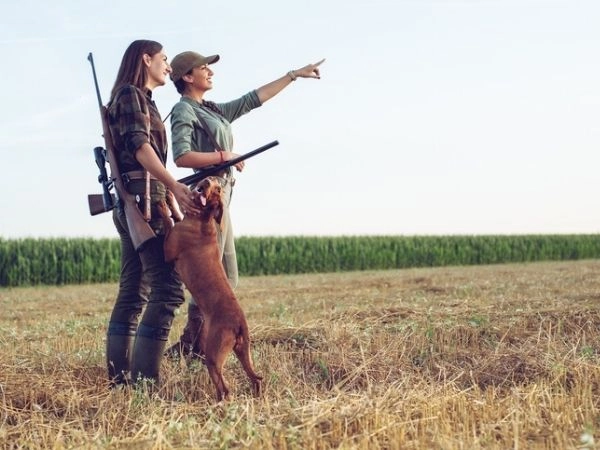
Many love bird hunting with pointing dogs, where technique meets patience.
Others prefer selective hunting, where every decision is considered, studied, and ethically conscious.
Some focus on mountain hunting, facing extreme terrain and conditions with determination and sporting spirit.
What unites them is a new approach, built on silence, restraint, and awareness.
Less show, more listening.
Fewer trophies, more emotions.
The Different Language of Female Hunting
Many male hunters recognize it: women have a different way of experiencing hunting.
They observe longer, shoot less, remember every detail.
They don’t chase numbers, but intensity.
They don’t speak of “game shot,” but of “experience lived.”
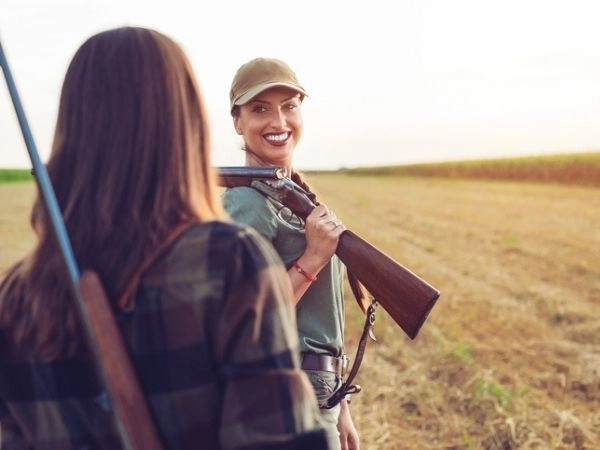
It’s a language that enriches the hunting world, making it more human, closer to nature.
By nature, the female hunter seeks balance.
Her sensitivity translates into gentler gestures and a deep connection with the environment and animals.
Many speak of the “energy of the moment,” of “silent communication” with wildlife.
In a world that runs and shouts, female hunting teaches the value of slowness.
Dogs, Land, Emotion: The Perfect Trio
There is something magical in the bond between a female hunter and her dog.
Perhaps because, in that relationship, trust is absolute.
Women read body language, notice nuances.
This makes them extraordinary handlers.
Many excel in work trials, dog gatherings, retrieving, and pointing disciplines.
They work silently, yet with almost natural precision.
They do not force the dog: they listen and understand.
And the dog, feeling understood, works in rare harmony.
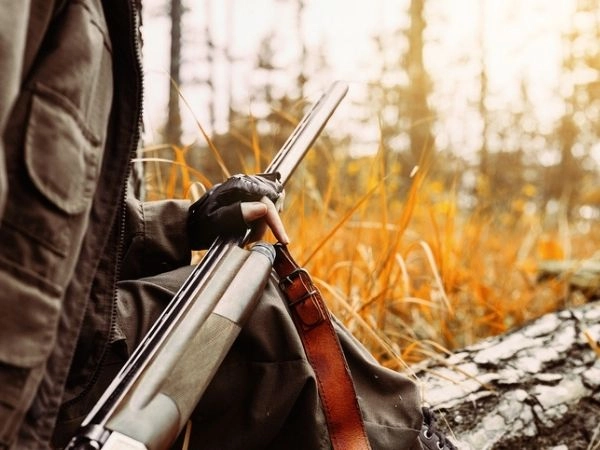
In Northern Italy’s reserves and Montefeltro hunting trips, you often see these perfect pairs:
a woman and her dog moving together in the woods, light, coordinated, one breath in the wind.
When the point comes, there is almost sacred respect.
Every step measured, every shot a conscious decision.
It is a scene that restores hunting to its purest form.
Between Fashion and Authenticity: The Aesthetics of Female Hunting
In recent years, women’s presence in hunting has inspired a new style.
No longer masculine clothing adapted, but dedicated, elegant, and functional lines.
Shaped technical jackets, molded boots, jackets combining performance and beauty.
International brands like Beretta, Browning, Härkila, and Sitka have launched “Ladies” lines designed not only for fit but identity: warm colors, durable fabrics, discreet yet refined design.
True elegance, however, is not in form, but in bearing.
Women hunters need to prove nothing.
Their strength is natural, their presence in the field harmonious.
They know the land, fear no hardship, and never abandon femininity even with a rifle on their shoulder.
Perhaps it is this balance — between determination and grace — that makes them the new silent icons of modern hunting.
Ethics as a Signature
There is a common thread among all female hunters, from the most experienced to the youngest: ethics.
For them, hunting is never a show, but respect.
Respect for life, death, the land, and the rules.
Many actively participate in conservation projects, wildlife monitoring, and environmental awareness.
Some collaborate with reserves and institutions to promote sustainable, responsible hunting.
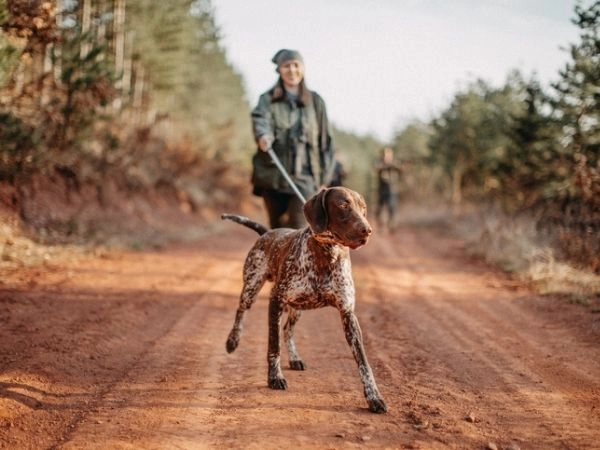
Others organize events and workshops to introduce new generations of girls, teaching that hunting is not violence, but knowledge.
A form of natural balance, built on discipline and passion.
This empathetic, conscious approach is improving the image of hunting itself, often misunderstood by the public.
Women are becoming silent but powerful ambassadors: the most credible voice of contemporary hunting ethics.
Hunting as a Return to Essentials
When a woman shoulders a rifle, she challenges no one.
She does not seek to prove strength, but to reconnect with her primal nature.
Hunting becomes an almost meditative experience: silence, slowness, focus, and patience.
Many say that after years of work and city life, hunting became a way to rediscover themselves.
To breathe. To reconnect with their authenticity.
There is a moment, they say, when everything stops: the dog freezes, the air vibrates, the breath becomes light.
And in that heartbeat, one feels part of something greater.
An emotion without gender.
The universal language of hunting lived with respect and awareness.
From Past to Future: The New Face of Italian Hunting
In Italy, women hunters are still a minority but steadily growing.
According to recent data, women make up about 5% of hunting license holders, and the number increases each year.
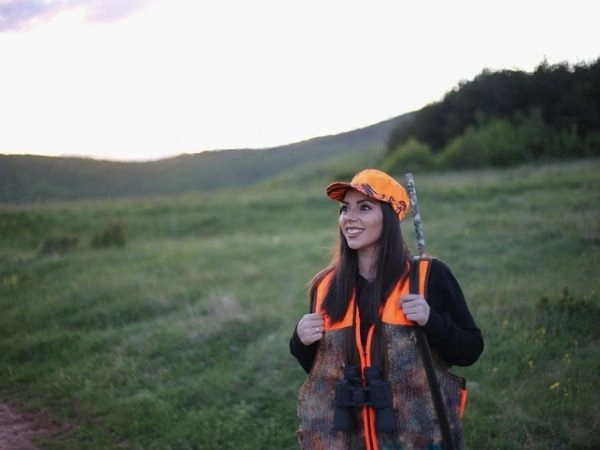
New generations of female hunters are no longer only from rural areas: they come from cities, universities, and diverse professional backgrounds.
Many discover hunting through sport shooting, others through trips, survival courses, or organized hunting stays.
They all bring a fresh, modern, curious vision.
The future of Italian hunting, increasingly attentive to the environment and quality of experience, cannot ignore women.
They will restore balance, measure, poetry.
They will remind that hunting is not domination, but dialogue; not violence, but knowledge; not show, but harmony.
A Final Look: The Elegance of Silence
In the end, the most powerful image is always the same.
A woman walking in the morning mist, rifle slung, dog ahead.
No words are needed.
Every step tells a story of freedom and respect.
The sun filters through the trees, the air smells of earth and moisture.
She stops, observes, listens.
A partridge rises, wings beat, a sharp shot. Then silence again.
A full, powerful silence, the same that has accompanied hunting and its protagonists for centuries.
Because the real difference has never been between men and women.
But between those who shoot to exist and those who hunt to understand.



